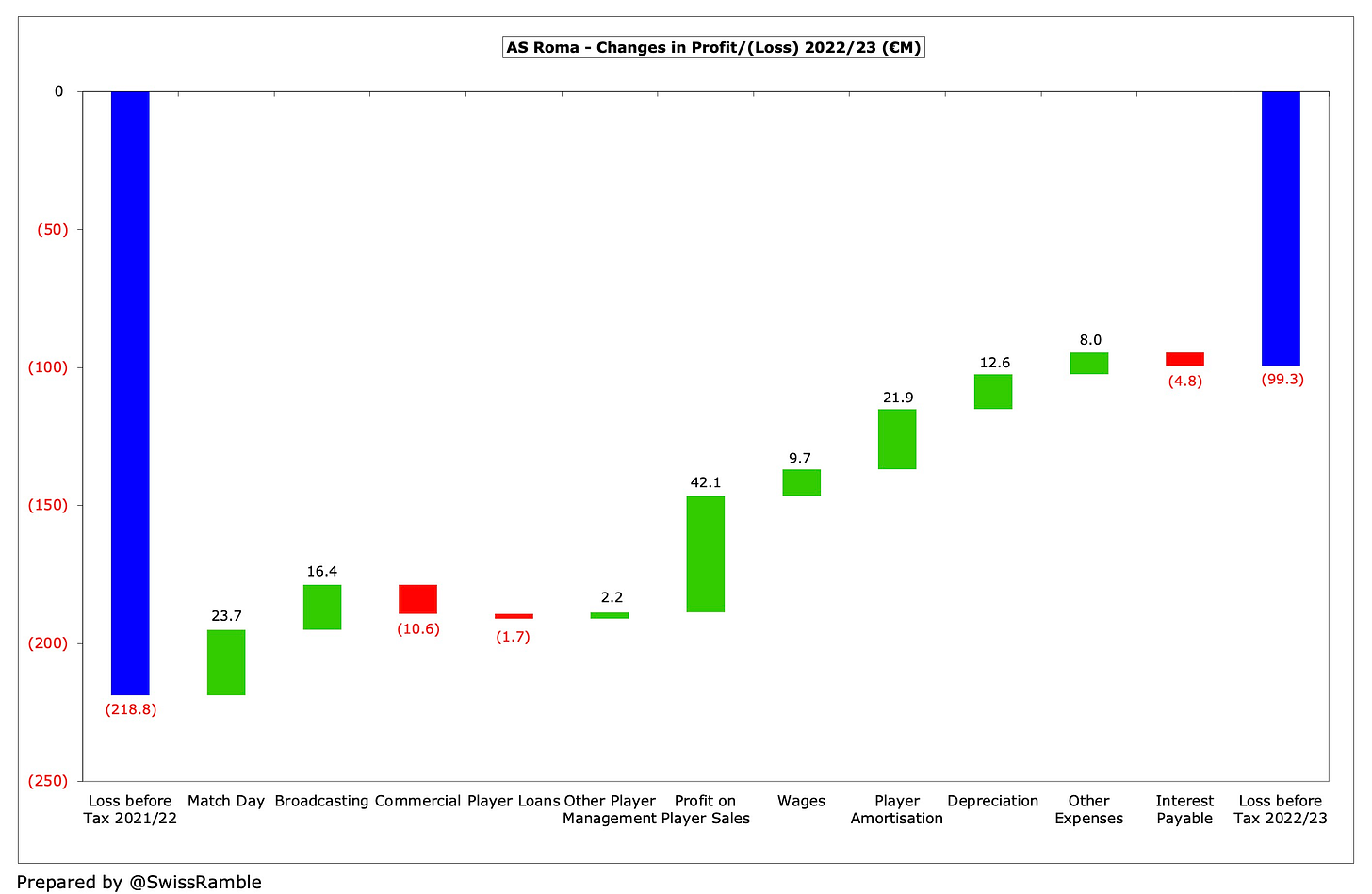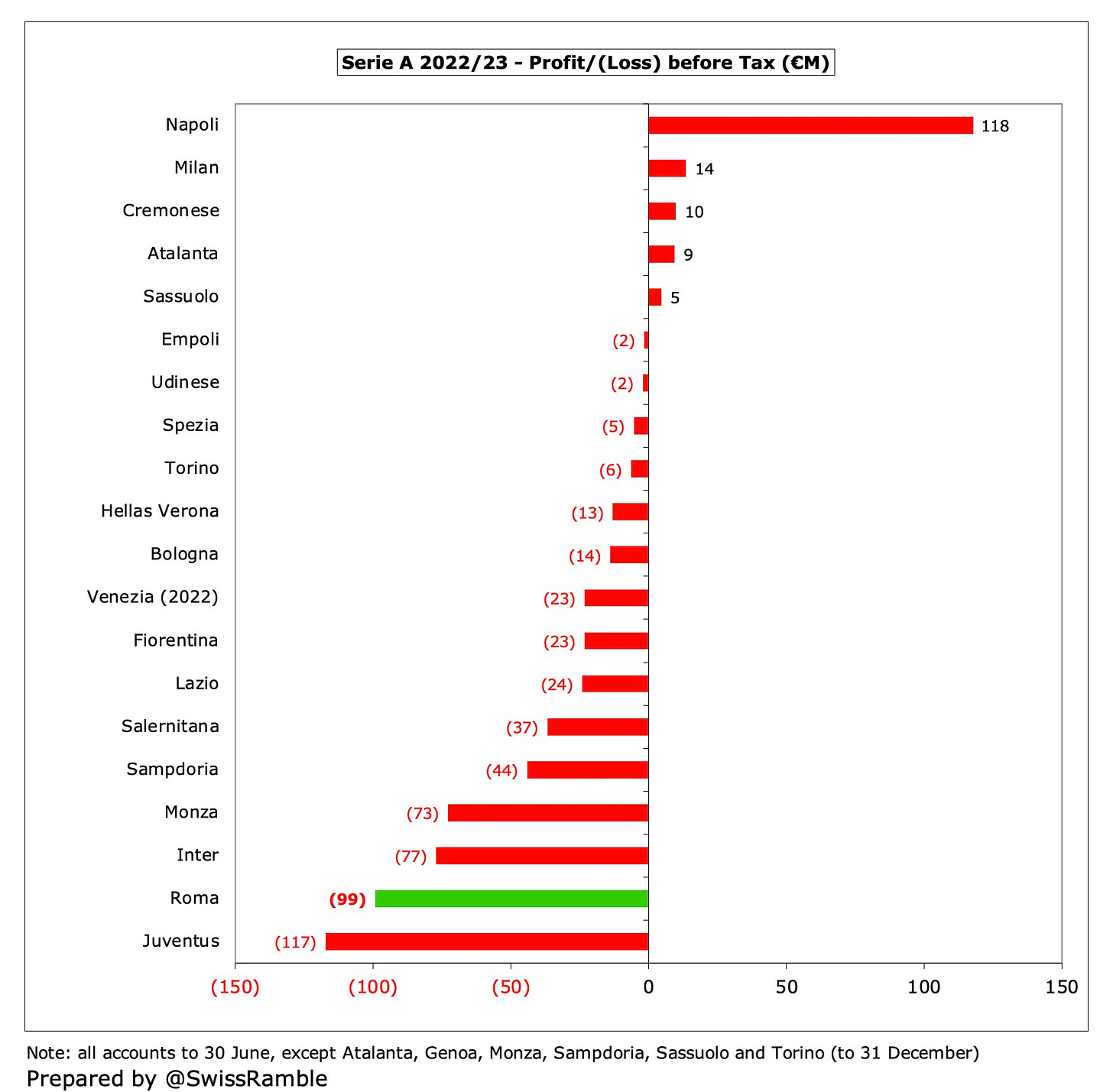The announcement that Roma had sacked José Mourinho might have come as a surprise to some, given that the experienced Portuguese manager had led the club to two European finals and still retained the support of much of the fan base, but the decision was understandable from a financial perspective.
The fact that this was a business assessment becomes more evident once the club’s 2022/23 accounts are analysed.
These cover a season when Roma finished 6th in Serie A for the second year in a row, which meant that they once again failed to qualify for the money-spinning Champions League. However, they did reach the final of the Europa League, where they were defeated by Sevilla on penalties.
This was Roma’s third season under the ownership of The Friedkin Group, who purchased the club from fellow American James Pallotta in August 2020.
Profit/(Loss) 2022/23
The good news is that Roma’s pre-tax loss more than halved, narrowing from €219m to €99m, which is a significant improvement, but this was still a sizeable deficit. The greatly reduced loss was needed to comply with the settlement agreement signed with UEFA.
Revenue rose €28m (14%) from €196m to €224m, while profit from player sales shot up from €5m to €47m, while costs were cut by €52m (13%) to €349m, though net interest payable increased by €5m (21%) from €23m to €28m.
Loss after tax also fell from €219m to €103m.
Roma’s revenue increase was driven by match day, which nearly doubled from €26m to €49m, while broadcasting rose €16m (18%) from €93m to €109m. Commercial fell €11m (15%) from €73m to €62m, though this was mainly due to high player insurance payouts in the previous year. Player loans also decreased from €5m to €3m.
As a technical aside, this definition of Roma’s €224m revenue is different to the one used in the club accounts of €277m, which also included the €47m gain on player sales and €6m income from other player management. This rose by a third (€71m) from the prior year’s €206m.
Roma’s cost base was reduced across the board, especially staff costs, as the wage bill was cut €10m (5%) from €183m to €173m and player amortisation decreased €22m (28%) from €78m to €56m.
In addition, depreciation fell €13m (72%) from €18m to €5m, while other expenses were down €8m (6%) from €123m to €115m.
Despite the improvement, Roma’s €99m pre-tax loss was the second highest in Serie A last season, only surpassed by Juventus €117m., though it was better than Inter €77m. In stark contrast, Napoli reported a €118m profit, which was an Italian record, while Milan also notched up a €14m surplus.
It was much the same story for the net figures after tax, though Roma’s loss was a bit higher at €103m. Losses were also more than before tax at Juventus €124m and Inter €85m.
Keep reading with a 7-day free trial
Subscribe to The Swiss Ramble to keep reading this post and get 7 days of free access to the full post archives.








